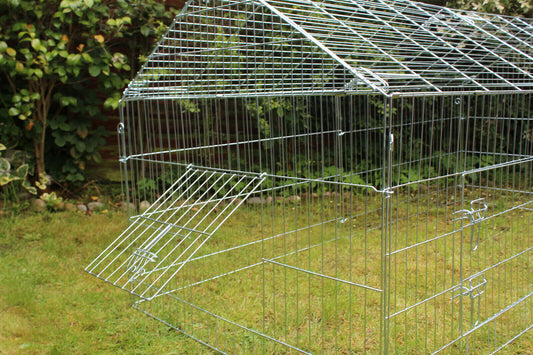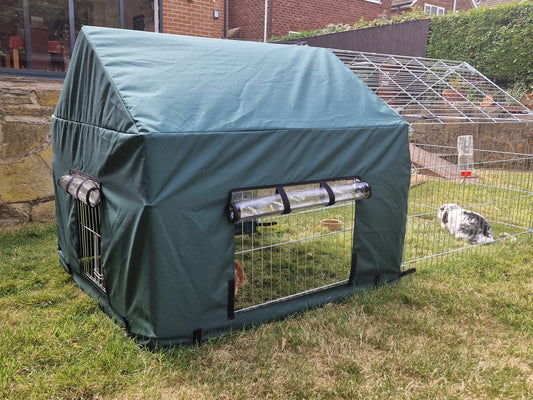Introducing a new kitten to an older cat needs patience, understanding, and planning. It's an exciting but delicate process. The dynamics between these two feline personalities can sometimes be as unpredictable as a cat's curiosity. With the right approach, you can pave the way for a harmonious coexistence between your new kitten and the established cat.
Here's a comprehensive guide on how to introduce a kitten to an older cat, ensuring a smooth transition and a joyful companionship.
Make sure you’re ready!
Before you bring your new kitten home you need to ensure you have enough resources to accommodate another cat. Cats generally don’t like to share cat litter trays so the rule of thumb is to have at least one per cat plus one extra. Each cat should also have their own cat food and water bowls, beds and scratching posts.
1. Prepare a Separate Space:
Introducing a new kitten to your household is an exciting time, but it's crucial to start off on the right paw. To introduce a kitten to an older cat, give the kitten its own space that is comfortable and welcoming.
Equip a separate room with all the essentials – cat litter box, cat food, water bowls, and cosy cat bedding. The kitten can feel safe here. It can get used to its new surroundings, smells, and noises. It won't feel stressed or get into fights.
2. Gradual Scent Exchange:
Gradually exchanging scents helps prepare your new kitten and older cat for their eventual meeting. Swap cat bedding between the kitten and older cat to familiarise them with each other's scent. Rub a cloth on one cat and place it near the other, allowing them to get accustomed to the new aroma.
Letting them smell each other helps them get to know each other better, making it easier for them to meet. Remember, each cat is different, so adjust the speed of smelling each other based on their comfort and reactions. As you go through this phase, you're creating a good relationship between your new kitten and older cat.
3. Controlled Visual Contact:
Controlled visual contact is a pivotal step in introducing a new kitten to an older cat. This phase builds upon the gradual scent exchange, allowing the cats to see each other without direct physical interaction. Observe their reactions – curiosity, hissing, or indifference – as they begin to establish a visual connection. Cats watch each other and learn about their new friend by looking at how they move and behave.
4. Positive Mealtime Associations:
Feed both cats on opposite sides of the closed door. This creates a positive association between each cat's presence and the pleasure of mealtime. Over time, they'll start to associate each other's presence with something enjoyable. Linking cats with cat food enjoyment helps them see each other as comforting companions instead of rivals.
5. Controlled Meetings:
Controlled meetings are a pivotal phase in the process of introducing a new kitten to an older cat. When the cats are comfortable with each other's smell and being near each other, it's time for a supervised meeting. These interactions allow the cats to gradually become accustomed to each other's physical presence and body language, under your watchful supervision.
The goal is to ensure that these meetings are positive, stress-free, and build a foundation for future interactions. Use a cat leash on the kitten and ensure the older cat is supervised. Observe their body language – raised fur, growling, or hissing – and separate them if tensions escalate.
6. Respect Personal Spaces:
Cats value their personal space, so ensure they each have designated areas to retreat to. Providing multiple hiding spots, cat scratching posts, and high perches can alleviate stress and prevent potential conflicts.
7. Gradual Interaction Time:
As their interactions become more positive, allow supervised play sessions. Engage in interactive play with both cats using cat toys, feathers, or strings. This not only helps them bond but also expands their energy in a positive manner.
8. Patience is Key:
Remember that the timeline for successful introductions varies for each cat. Some may adjust within days, while others might take weeks. Be patient and let them set the pace for their relationship.
9. Equal Attention and Affection:
Continue to spend quality time with your senior feline to reassure them that they are still valued members of the family.
When introducing your new kitten to your older cat, it is crucial to treat them both equally. This means giving them the same amount of attention and affection. While the new kitten requires your attention, ensure that the older cat doesn't feel neglected. This step helps prevent jealousy, territorial behaviour, and feelings of neglect.
By ensuring that both cats receive equal love and care, you're fostering a harmonious environment where both feline companions can thrive.
10. Professional Guidance:
If tensions persist or escalate, consider seeking advice from a veterinarian or animal behaviourist. These experts can provide tailored guidance to address specific challenges and ensure a harmonious integration.
11. Establishing Territories:
Cats are territorial creatures. Gradually expand the older cat's territory into the kitten's space and vice versa. This allows both cats to explore new scents and areas at their own pace.
12. Signs of Compatibility:
Positive signs of compatibility include grooming each other, sleeping in close proximity, and engaging in play together. These behaviours indicate a growing bond between the two feline companions.
13. Monitor Body Language:
Closely observe their body language during interactions. Ears laid back, raised fur, and intense staring are signs of potential aggression. On the other hand, relaxed posture, slow blinking, and gentle tail flicks indicate comfort.
14. Gradual Unsupervised Time:
Once you're confident in their interactions, allow short periods of unsupervised time together. Start with brief intervals and gradually increase the duration as their relationship strengthens.
15. Celebrate Milestones:
Acknowledge and celebrate small victories. Each positive interaction, whether it's a shared cat meal or a friendly sniff, brings them closer to forming a lasting bond.
Introducing a kitten to an older cat requires patience, strategic planning, and a deep understanding of feline behaviour. To establish a positive relationship between your new kitten and older cat, follow these steps. Allow the cats to dictate how they interact with each other. With time, patience, and a little bit of feline intuition, you'll witness the heartwarming journey of friendship unfold before your eyes.
If you enjoyed this article, why not read:









